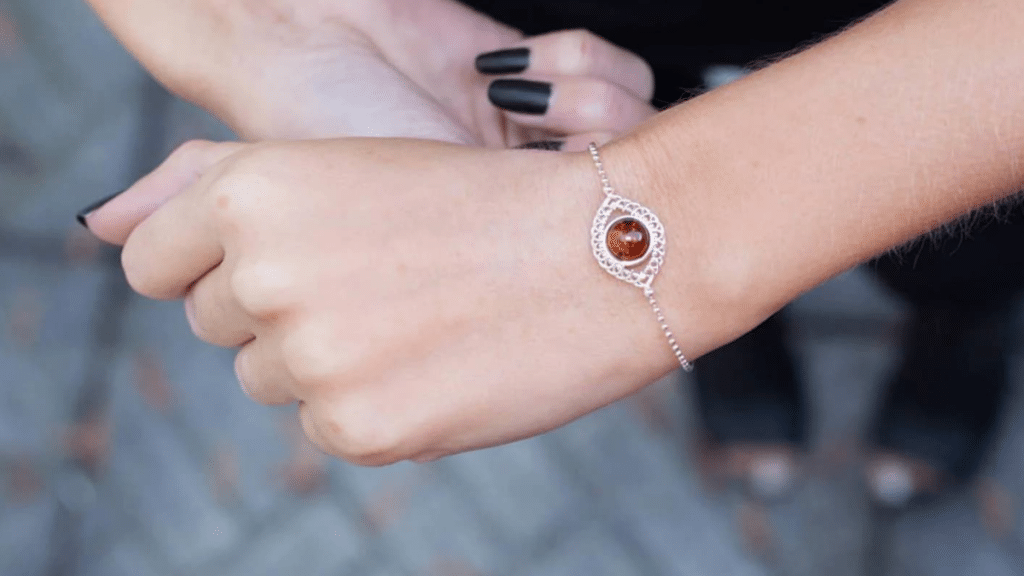In this exploration, we unravel the intricacies that set sterling silver apart from its elemental counterpart. While both share the allure of gleaming silver, the disparity lies beneath the surface. Sterling silver, an alloy of silver and other metals, possesses exceptional durability and luster, making it a prized choice for jewelry and silverware. Meanwhile, pure silver, in its elemental form, embodies timeless elegance. Join us on a journey where we dissect these materials, clarifying the nuances and guiding you through the realm of exquisite craftsmanship and enduring value.
In understanding the distinctive qualities of sterling silver and its elemental counterpart, it becomes evident that the worth of sterling silver extends far beyond its monetary value.
1. Understanding Sterling Silver: Composition and Purity
Sterling silver, renowned for its enduring appeal, is primarily composed of 92.5% pure silver, with the remaining 7.5% typically made up of other metals, often copper. This alloy enhances the metal’s strength, making it suitable for intricate jewelry designs and various decorative items. The incorporation of copper improves durability while preserving silver’s natural brilliance. This meticulous blend ensures sterling silver maintains its shine over time, making it a preferred choice for crafting exquisite jewelry pieces and cherished heirlooms.
2. Pure Silver: Exploring the Essence of Elemental Elegance
Pure silver, consisting of 99.9% silver, boasts a captivating brilliance that defines timeless elegance. Revered for its natural luster, this elemental form showcases silver in its purest state. Jewelry crafted from pure silver exudes a soft, radiant glow, creating an aura of sophistication. However, due to its malleability, pure silver is often alloyed with other metals for practical use, ensuring longevity and strength while preserving its innate beauty in ornamental pieces and decorative artifacts.
3. Durability and Uses: Why Sterling Silver Shines Bright
Sterling silver’s unique composition grants it remarkable durability, making it ideal for everyday wear in jewelry and various decorative applications. Its versatility extends to a wide array of items, from intricately designed rings and bracelets to elegant flatware and ornate sculptures. Sterling silver’s ability to withstand daily wear and tear without losing its charm makes it a preferred choice, ensuring enduring beauty in both functional and aesthetic contexts.
4. Silver Varieties Around the World: A Global Perspective
Silver’s rich history spans diverse cultures and civilizations, resulting in a myriad of regional silver varieties worldwide. Each culture contributes unique craftsmanship techniques, ornamentation styles, and cultural symbolism to silver items, showcasing the metal’s versatility and cultural significance. From the delicate filigree work of India to the intricate designs of Mexican silver jewelry, exploring these global varieties offers a captivating glimpse into the artistry and cultural heritage associated with silver craftsmanship.
5. Tips for Buyers: Making Informed Choices in Silver Selection
For buyers navigating the silver market, understanding factors like purity, authenticity, and craftsmanship is crucial. Examining hallmark stamps, verifying certificates of authenticity, and researching reputable sellers are essential steps. Buyers should prioritize their preferences, whether it’s sterling silver for durability or pure silver for its innate beauty. Additionally, considering the intended use, maintenance requirements, and budget constraints aids in making informed choices, ensuring a satisfying and valuable silver purchase tailored to individual preferences and requirements. Similarly, when exploring the world of fine jewelry, such as an 18k gold ring, buyers find themselves facing a similar array of considerations.

